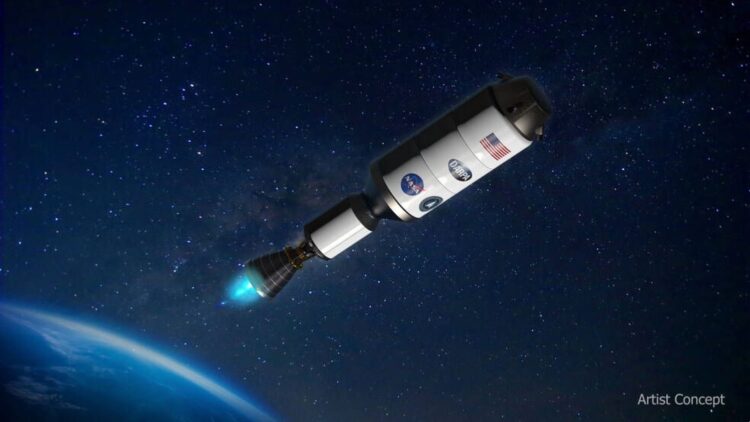NASA’s groundbreaking discovery promises to revolutionize space exploration: a nuclear propulsion system that could reduce the current time to Mars from seven months to 45 days. This innovation is more efficient and provides higher thrust than conventional hydrogen and plasma-based engines.
Through cooperation with NASA, DARPA, and key private players, people are closer than ever to rapidly travel to the Red Planet and open new space exploration and science opportunities.
Nuclear power: The ultimate game-changer in space propulsion
Still, chemical rockets are pretty conventional and are accompanied by problems with fuel systems and relatively low efficiency. NASA’s attention has been drawn to nuclear thermal and nuclear electric propulsion systems, which are many folds more efficient. They are focusing more on nuclear propulsion despite recently trying this type of propulsion on rockets.
Nuclear thermal propulsion, for instance, provides chemical-like thrust but at a three times efficiency. This technology fulfils the application by employing a reactor to superheat propellant and expulse it through a nozzle to speed up a spacecraft drastically.
The prototype of this highly developed system is to be in space by 2027, with Lockheed Martin being among the technology partners involved. This efficiency could extend 45-day Mars missions, thus altering the timeline of manned space exploration. In addition to Mars, this system may be helpful for faster and more efficient movement throughout the Solar System, changing human dreams about interplanetary travel.
Besides, nuclear propulsion is also in line with NASA’s interests because of its Artemis program, which seeks to put people on the moon again. This dual focus guarantees that all these technologies help Mars missions and Earth-Moon activities be more effective.
Combining nuclear and plasma propulsion for optimal performance
This is true, especially in propulsion, where there is already a formidable prospect of combining nuclear power with plasma-based systems such as the Variable Specific Impulse Magnetoplasma Rocket (VASIMR). At the same time, VASIMR relies on electromagnetic fields to produce high-speed plasma jets, ensuring the highest fuel consumption rate. However, it needs energy to operate, which conventional power structures cannot meet, hence the need for a radical solution.
Here comes SpaceNukes’ Kilopower reactors. These compact nuclear fission systems can produce steady power for years, which VASIMR needs. These technologies will provide high thrust and propellant efficiency, drastically reducing mission times.
It also widens the choice of fuels, which makes emissions more economical with this hybrid approach to travel. The relationship between Ad Astra and SpaceNukes may still be in its infancy, but it is a leap toward making space travel sustainable. Some form of orbital tests are expected in the next few years, with commercial use expected in the early 2030s.
Challenges and the path ahead for nuclear propulsion
Nonetheless, nuclear propulsion has technical challenges. During operation, the reactor core is exposed to temperatures of over 4,600°F; thus, the material and engineering used must be unique. NASA and the Department of Energy continue engaging private industry to address these challenges. Some preliminary designs to respond to these challenges are already being drawn.
For this reason, NASA must work closely with DARPA and other industry stakeholders to overcome all these complexities. The goal is to design an optimally time-insensitive system that offers as much flexibility in mission planning. One major drawback is eliminated: due to the abbreviated mission duration, exposure to cosmic radiation, in addition to the effects of long-time isolation, is also lowered.
The risks are enormous, although the potential benefits are worth millions of dollars. With shorter missions, the astronauts could explore Mars and return within 2 years, which would enhance the knowledge about this planet by leaps and bounds.
NASA’s desire to go nuclear is the next big thing in space exploration. Incorporating nuclear thermal and plasma propulsion technologies will make future missions to Mars and other destinations faster, safer, and more efficient.
While there are still issues, what has been done so far is an excellent example of human effort and creativity. The promise of a Martian trip in 45 days may come true with a prototype expected in 2027, paving the way for new interplanetary travel.

